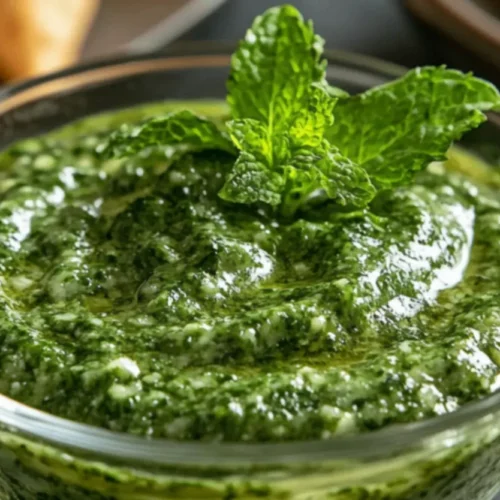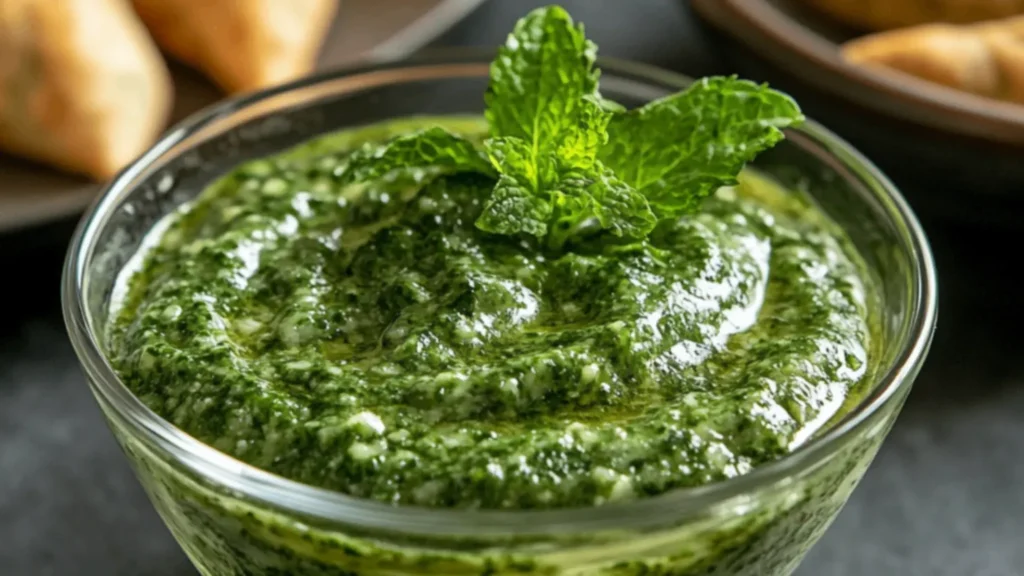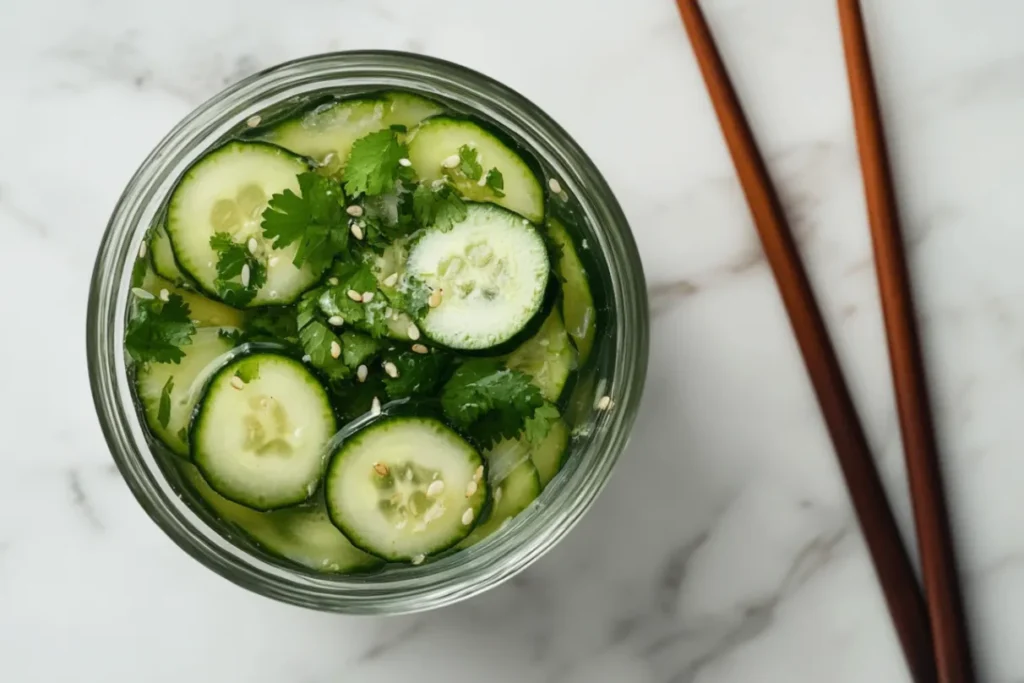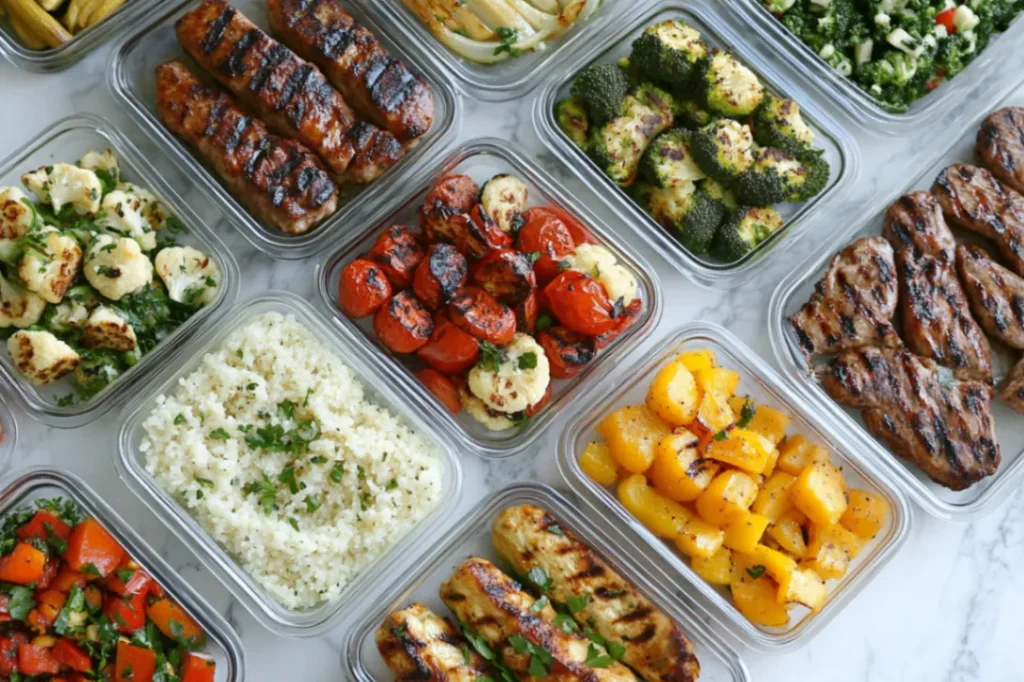
Table of Contents
Discover the vibrant flavors of authentic homemade chutneys with our summer special recipes. These versatile condiments will elevate your meals while keeping you cool during hot summer days.
Introduction: Chutney Recipe
Chutneys are an essential part of many cuisines around the world, particularly in South Asian cooking. These flavorful condiments bring a perfect balance of sweet, tangy, spicy, and savory notes that can transform even the simplest dishes into culinary masterpieces. During summer months, fresh herb and fruit chutneys offer a refreshing contrast to heavy meals and help stimulate appetite during hot weather.
In this comprehensive guide, we’ll explore various authentic chutney recipes specially crafted for summer enjoyment. Whether you’re hosting a backyard barbecue, planning a picnic, or simply looking to add zest to your everyday meals, these chutney recipes will surely impress your family and friends.

Summer Chutney Recipes: Refreshing and Authentic Homemade Condiments
Ingredients
- 2 cups fresh mint leaves
- 1 cup fresh cilantro leaves
- 2-3 green chilies
- 1 inch ginger
- 2 garlic cloves
- 1 small onion
- 1 tbsp cumin seeds toasted
- 2 tbsp lemon juice
- 1 tbsp sugar or jaggery
- Salt to taste
- 2-3 tbsp water
- Optional: 2 tbsp plain yogurt
What Makes a Perfect Summer Chutney?
Summer chutneys differ from their winter counterparts in several ways. They typically feature:
- Fresh, seasonal ingredients – Using summer produce at the peak of ripeness
- Lighter flavors – Less cooking time to preserve brightness
- Cooling elements – Ingredients like mint, cucumber, and yogurt that help beat the heat
- Versatility – Ability to pair with grilled foods, sandwiches, and summer salads
The best summer chutneys should balance flavor intensities while bringing a cooling sensation to complement hot weather and spicy foods. Unlike winter chutneys that often involve longer cooking times and preserved ingredients, summer versions celebrate freshness and immediacy.
Essential Equipment for Chutney Preparation
Before diving into our recipes, let’s ensure you have the necessary tools:
- Food processor or blender – For creating smooth chutneys
- Mortar and pestle – For more rustic, textured preparations
- Sharp knife and cutting board – For precise ingredient preparation
- Non-reactive mixing bowls – Glass or stainless steel work best
- Storage containers – Preferably glass jars with tight-fitting lids
- Measuring spoons and cups – For recipe accuracy
- Citrus juicer – For extracting fresh lime or lemon juice

With these basic tools, you’ll be well-equipped to prepare any of the chutneys in our collection.
Classic Mint Chutney (Pudina Chutney)
Mint chutney is perhaps the most refreshing summer condiment, perfect for hot days and spicy meals. This vibrant green sauce pairs wonderfully with samosas, kebabs, sandwiches, and grilled meats.
Ingredients
- 2 cups fresh mint leaves, tightly packed
- 1 cup fresh cilantro (coriander) leaves, tightly packed
- 2-3 green chilies (adjust according to spice preference)
- 1-inch piece of ginger, peeled
- 2 cloves garlic
- 1 small onion, roughly chopped
- 1 tablespoon cumin seeds, lightly toasted
- 2 tablespoons fresh lemon juice
- 1 tablespoon sugar or jaggery
- Salt to taste
- 2-3 tablespoons water (as needed for consistency)
- Optional: 2 tablespoons plain yogurt for a creamier version
Preparation Method
- Thoroughly wash the mint and cilantro leaves under cold running water. Drain well and gently pat dry with kitchen towels.
- Lightly toast the cumin seeds in a dry pan over medium heat until fragrant, about 30-45 seconds. Allow to cool slightly.
- In a food processor or blender, combine mint leaves, cilantro, green chilies, ginger, garlic, onion, and toasted cumin seeds.
- Pulse several times until ingredients are roughly chopped.
- Add lemon juice, sugar, and salt. Process until a smooth paste forms.
- If the mixture is too thick, add water one tablespoon at a time until desired consistency is reached.
- For a creamier version, add yogurt and pulse a few more times to incorporate.
- Taste and adjust seasoning if necessary.
- Transfer to a clean container and refrigerate for at least 30 minutes before serving to allow flavors to meld.
This Chutney Recipe keeps well in the refrigerator for up to 3 days. The bright green color may darken slightly, but the flavor remains excellent.
Refreshing Coconut-Coriander Chutney Recipe
This cooling coconut-based Chutney Recipe is a staple in South Indian cuisine. Its mild, creamy flavor makes it an excellent accompaniment to spicy dishes and a perfect dipping sauce for dosas, idlis, and vadas.
Ingredients
- 1 cup fresh or frozen grated coconut
- 1/2 cup fresh coriander leaves, tightly packed
- 2-3 green chilies (adjust to taste)
- 1-inch piece of ginger, peeled
- 2 tablespoons roasted chana dal (split chickpeas)
- 1 tablespoon tamarind paste or 2 tablespoons fresh lemon juice
- Salt to taste
- Water as needed for consistency

For tempering (optional)
- 1 tablespoon oil
- 1/2 teaspoon mustard seeds
- 1/4 teaspoon asafoetida (hing)
- 2-3 curry leaves
- 1 dried red chili, broken into pieces
Preparation Method
- If using frozen coconut, thaw completely before using.
- In a dry pan, lightly toast the chana dal until golden brown and aromatic. Allow to cool.
- In a blender or food processor, combine coconut, coriander leaves, green chilies, ginger, and roasted chana dal.
- Add tamarind paste or lemon juice and salt.
- Process, adding small amounts of water as needed, until you achieve a smooth but thick consistency.
- Transfer the chutney to a serving bowl.
- For tempering (optional): Heat oil in a small pan. Add mustard seeds and when they begin to pop, add asafoetida, curry leaves, and dried red chili. Cook for 30 seconds until fragrant.
- Pour the tempering over the chutney and mix gently.
This chutney can be stored in the refrigerator for up to 2 days.
Tangy Tomato and Red Chili Chutney Recipe
This vibrant red Chutney Recipe delivers a perfect balance of tangy, sweet, and spicy flavors. It pairs exceptionally well with savory snacks, grilled meats, and cheese platters.
Ingredients
- 4 large ripe tomatoes
- 3-4 dried red chilies (adjust to spice preference)
- 1 medium onion, roughly chopped
- 4 cloves garlic
- 1-inch piece of ginger, peeled
- 2 tablespoons vegetable oil
- 1 teaspoon cumin seeds
- 1/2 teaspoon fenugreek seeds
- 1/4 teaspoon asafoetida
- 1 tablespoon jaggery or brown sugar
- Salt to taste
- 2 tablespoons vinegar (apple cider or white vinegar)
Preparation Method
- Wash tomatoes and score an “X” at the bottom of each. Blanch in boiling water for 30 seconds, then transfer to ice water. When cool, peel and roughly chop.
- Heat oil in a pan over medium heat. Add cumin seeds and fenugreek seeds. When they start sputtering, add asafoetida.
- Add chopped onions and sauté until translucent.
- Add garlic and ginger, and cook for another minute until fragrant.
- Add dried red chilies (broken into pieces) and chopped tomatoes.
- Cook over medium heat, stirring occasionally, until tomatoes break down and the mixture starts to thicken (about 15-20 minutes).
- Add jaggery or brown sugar, salt, and vinegar. Mix well and cook for another 5 minutes.
- Allow the mixture to cool slightly, then transfer to a blender or food processor.
- Pulse to desired consistency – this Chutney Recipe can be kept slightly chunky or blended until smooth.
- Allow to cool completely before transferring to an airtight container.
This chutney can be stored in the refrigerator for up to a week and often tastes even better the day after preparation as flavors continue to develop.

Sweet and Spicy Mango Chutney Recipe
Summer is mango season, making this sweet and spicy chutney a seasonal delight. It balances the natural sweetness of ripe mangoes with heat from chilies and aromatic spices.
Ingredients
- 2 large ripe mangoes, peeled and diced (approximately 3 cups)
- 1 medium red onion, finely chopped
- 2 red chilies, deseeded and finely chopped
- 2 tablespoons ginger, grated
- 3 cloves garlic, minced
- 1 cup apple cider vinegar
- 3/4 cup brown sugar
- 1/2 teaspoon ground turmeric
- 1 teaspoon ground cumin
- 1 teaspoon ground coriander
- 1/2 teaspoon ground cinnamon
- 1/4 teaspoon ground cloves
- 1 teaspoon salt
- 2 tablespoons vegetable oil
Preparation Method
- Heat oil in a large, heavy-bottomed saucepan over medium heat.
- Add onions and sauté until soft and translucent, about 5 minutes.
- Add chilies, ginger, and garlic. Cook for another 2 minutes until fragrant.
- Add all ground spices (turmeric, cumin, coriander, cinnamon, and cloves) and stir continuously for 30 seconds to prevent burning.
- Add diced mangoes, vinegar, brown sugar, and salt. Stir to combine.
- Bring the mixture to a boil, then reduce heat to low and simmer uncovered.
- Cook for approximately 40-45 minutes, stirring occasionally, until the mangoes break down and the mixture thickens to a jam-like consistency.
- The Chutney Recipe is ready when it coats the back of a spoon and leaves a clear path when you run your finger through it.
- Allow to cool completely before transferring to sterilized jars.
When properly prepared and stored in sterilized jars, this mango chutney can last for several months in the refrigerator.
Quick Cucumber Raita (Yogurt Chutney)
While technically a raita, this yogurt-based preparation serves the same purpose as a Chutney Recipe in cooling and complementing spicy foods. It’s incredibly refreshing during hot summer days.
Ingredients
- 2 cups thick plain yogurt (Greek yogurt works well)
- 1 large cucumber, peeled, deseeded, and finely diced
- 2 tablespoons fresh mint leaves, finely chopped
- 1 tablespoon fresh cilantro, finely chopped
- 1/2 teaspoon roasted cumin powder
- 1/4 teaspoon black pepper, freshly ground
- 1/2 teaspoon chaat masala (optional)
- Salt to taste
- 1 small green chili, finely chopped (optional)
Preparation Method
- Whisk the yogurt in a bowl until smooth.
- After peeling and deseeding the cucumber, pat the diced pieces with a paper towel to remove excess moisture.
- Add cucumber, mint, cilantro, and green chili (if using) to the yogurt.
- Sprinkle with roasted cumin powder, black pepper, chaat masala (if using), and salt.
- Mix gently to combine all ingredients.
- Chill in the refrigerator for at least 30 minutes before serving.
This raita keeps well in the refrigerator for up to 2 days, although it’s best enjoyed fresh.
Serving Suggestions
Chutneys are incredibly versatile and can enhance a wide variety of dishes. Here are some suggestions for serving your homemade summer chutneys:
- Mint Chutney: Perfect with kebabs, samosas, pakoras, and grilled meats. Also excellent in sandwiches or wraps.
- Coconut-Coriander Chutney: Ideal with South Indian dishes like dosa, idli, and vada. Also wonderful with grilled fish or as a dip for raw vegetables.
- Tomato and Red Chili Chutney: Excellent with cheese platters, crackers, or as a spread on sandwiches. Also pairs well with grilled vegetables.
- Mango Chutney: Delicious with curry dishes, grilled chicken, or cheese plates. Also works as a glaze for roasted meats.
- Cucumber Raita: Perfect accompaniment to biryani, pulao, or any spicy curry. Also great as a dip for naan or pita bread.
Tips for Chutney Recipe Storage and Preservation
To maximize the shelf life and maintain the quality of your homemade chutneys, follow these storage guidelines:
- Fresh herb-based chutneys (mint, cilantro): Store in airtight containers in the refrigerator for 2-3 days. Adding a thin layer of oil on top can help prevent oxidation and discoloration.
- Cooked chutneys (tomato, mango): Store in sterilized glass jars in the refrigerator for up to 2 weeks. For longer storage, proper canning techniques should be employed.
- Yogurt-based preparations: These are highly perishable and should be consumed within 1-2 days of preparation.
- Freezing: Most herb-based chutneys freeze well. Portion into ice cube trays for convenient use, then transfer frozen cubes to freezer bags. These can last for up to 3 months.
- Always use clean utensils when scooping out chutney to prevent contamination and extend shelf life.
Health Benefits of Homemade Chutneys
Beyond their delicious flavors, homemade chutneys offer numerous health benefits:
- Rich in vitamins and minerals from fresh herbs, fruits, and vegetables
- Digestive aids – Many ingredients like ginger, cumin, and mint support healthy digestion
- Probiotic benefits from yogurt-based preparations
- Antioxidant properties from ingredients like turmeric, chilies, and fresh herbs
- Reduced sodium and preservatives compared to commercial versions
- Metabolism boost from spicy ingredients that can temporarily increase metabolic rate
Making your own chutneys allows you to control ingredients, thereby avoiding artificial preservatives, excess salt, and refined sugars often found in store-bought versions.
Common Chutney Mistakes to Avoid
Even experienced cooks can make mistakes when preparing chutneys. Here are some common pitfalls to avoid:
- Over-blending fresh herb chutneys – This can create a bitter taste and unpleasant texture
- Using stale or wilted herbs – Always opt for the freshest ingredients possible
- Improper seasoning balance – Chutneys need the right balance of salt, acid, sweetness, and heat
- Using reactive cookware – Acidic ingredients can react with aluminum or copper pots
- Improper storage containers – Non-food-grade plastic can leach chemicals into acidic chutneys
- Overloading with garlic – Too much raw garlic can overpower other flavors
- Insufficient cooling before storing – Hot chutney placed directly in the refrigerator can create condensation and spoil faster
 DINNER
DINNER LUNCH
LUNCH CAKE
CAKE BREAKFAST
BREAKFASTFor more amazing recipes, be sure to check out our other sections to explore a variety of ideas that will enrich your cooking experience. Each section offers its own unique flavors to ensure a delightful culinary journey:
- Easy and Quick Recipes: A collection of dishes that guarantee delicious meals with minimal effort and time.
- Healthy Recipes: Discover healthy and delicious options that fit your lifestyle.
- Desserts: A diverse selection of sweets that will add a special touch of sweetness to your table.
- Lunch Recipes: Tasty lunch ideas that you can easily prepare to delight your family.
- Dinner Recipes: Delicious and easy-to-make recipes that will make your dinner a memorable occasion.
Customizing Chutneys for Dietary Needs
One of the advantages of homemade chutneys is the ability to adapt recipes for various dietary requirements:
- Low sugar options: Replace sugar with stevia, monk fruit sweetener, or reduce the amount of jaggery/sugar
- Low sodium: Reduce salt and enhance flavors with lemon juice or amchur (dried mango powder)
- Vegan adaptations: Use plant-based yogurt for raita or coconut cream for creamy chutneys
- Nut-free versions: Substitute seeds (like sunflower or pumpkin) for nuts in recipes that call for them
- Low FODMAP: Prepare herb-based chutneys without garlic and onions, using the green parts of spring onions or asafoetida as flavor alternatives
Conclusion
Summer chutneys bring vibrant flavors, cooling elements, and nutritional benefits to your seasonal table. Whether you’re a novice cook or an experienced chef, these versatile condiments offer endless possibilities for culinary creativity. By mastering a few basic recipes, you can transform ordinary meals into extraordinary culinary experiences while beating the summer heat.
Experiment with different combinations of herbs, fruits, and spices to create your own signature chutneys. The recipes provided here serve as a foundation from which you can explore and develop unique variations that suit your palate and complement your favorite summer dishes.
Remember that the true essence of chutney-making lies in balancing flavors and textures while celebrating the freshness of seasonal ingredients. Happy cooking and enjoy your summer culinary adventures!
FAQs About Summer Chutneys
Q: Can I reduce the amount of chilies in these recipes? A: Absolutely! Adjust the quantity of chilies according to your spice tolerance. You can reduce or even omit them entirely for a milder flavor.
Q: I don’t have a food processor. Can I still make these chutneys? A: Yes, you can use a blender, immersion blender, or even a mortar and pestle for more rustic-textured chutneys.
Q: How can I make my chutneys last longer? A: For cooked chutneys, proper sterilization of jars and adding a preservation agent like vinegar or lemon juice can extend shelf life. Fresh herb chutneys can be frozen in small portions.
Q: Can I use dried herbs instead of fresh? A: Fresh herbs are strongly recommended for summer chutneys, especially mint and cilantro. Dried herbs will not provide the same bright flavor or color.
Q: My mint chutney turned brown after a day. Is it spoiled? A: This is normal oxidation and doesn’t mean the chutney is spoiled. Adding a bit of lemon juice and storing with a thin layer of oil on top can help prevent discoloration.
Q: Are chutneys spicy by definition? A: Not necessarily. While many traditional chutneys contain chilies, the spice level is entirely adjustable. Some chutneys, like sweet mango chutney, can be made with minimal or no heat.






